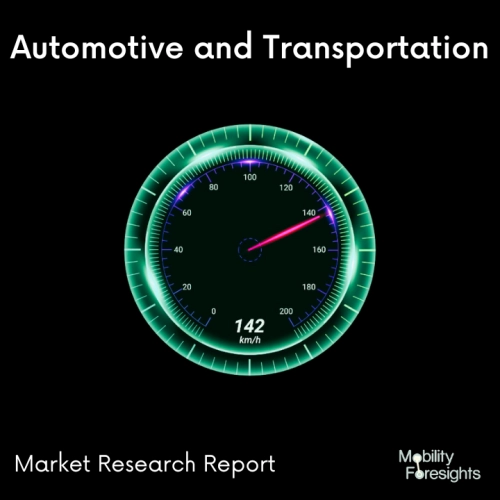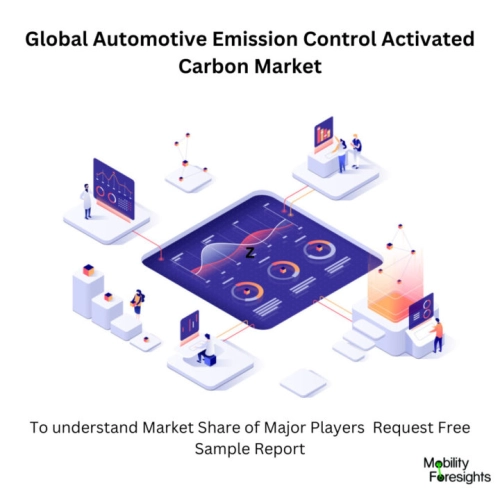
- Get in Touch with Us

Last Updated: Apr 25, 2025 | Study Period: 2024-2030
The surface area of activated carbon is enormous, and it has a huge network of small pores. It draws a wide variety of organic and inorganic substances.
It can be used by itself or impregnated with particular chemicals to increase its potency against particular substances.
Activated carbon is used in the automotive sector to reduce emissions, eliminate VOCs, and enhance cabin air quality.
Supercapacitor electrodes can also be made using it. The disclosure of a technique for avoiding attrited carbon dust will enhance canister performance for emission control.
The application of a thin, continuous polymer coating to the granular or shaped activated carbon is shown to greatly reduce or virtually eliminate product attrition caused by dusting, without reducing the adsorption velocity or capacity of the activated carbon.
As part of an evaporative emission control system, hydrocarbon vapour emissions from the gasoline tank are captured using an activated carbon canister (EVAP).
By opening a valve in the intake system and reversing the flow through the carbon canister while the engine is running, these stored hydrocarbons can be expelled, allowing the engine to burn up the hydrocarbon vapours.
As turbocharged GDI engines become more complicated and LEV III evaporative emissions rules call for zero evaporative emission losses, there is growing interest in optimising the carbon canister size for hydrocarbon storage as well as the hydrocarbon purge control technique.
Examples include where to purge, when to purge throughout a drive cycle, and how a purge event influences emissions and engine performance.

The Global Automotive Emission control activated carbon market accountedfor $XX Billion in 2023 and is anticipated to reach $XX Billion by 2030, registering a CAGR of XX% from 2024 to 2030.
The NORIT CNR 120 extruded activated carbon product from NIA Member Cabot, which will be the first in a line of high-tech activated carbons aimed at the automobile industry, was just released.
In many regions of the world, in particular, automotive emission restrictions are becoming stricter. The most popular technique available to accomplish this is activated carbon, which is used to absorb and desorb hydrocarbon molecules as the primary method of reducing emissions.
In comparison to the industry standard, this novel series of activated carbons is intended to offer maximal adsorption and desorption of volatile hydrocarbons while maximising the management of diurnal bleed loss and onboard refuelling vapour recovery (ORVR) in gasoline-powered cars.
A motor vehicle with an activated carbon filter and a process for regeneration. A motor vehicle with a fuel tank, an aeration device for the fuel tank that has an activated carbon filter and a regeneration device for regenerating the activated carbon filter, as well as a method for regenerating an activated carbon filter in a motor vehicle with a fuel tank and an aeration device for the fuel tank that has an activated carbon filter are proposed.
According to the invention, an internal combustion engine regeneration device is installed in the car and given a control device that activates it when the engine is operating in overrun mode. A method is also provided for the detection of internal combustion engine overrun mode.
| Sl no | Topic |
| 1 | Market Segmentation |
| 2 | Scope of the report |
| 3 | Abbreviations |
| 4 | Research Methodology |
| 5 | Executive Summary |
| 6 | Introduction |
| 7 | Insights from Industry stakeholders |
| 8 | Cost breakdown of Product by sub-components and average profit margin |
| 9 | Disruptive innovation in the Industry |
| 10 | Technology trends in the Industry |
| 11 | Consumer trends in the industry |
| 12 | Recent Production Milestones |
| 13 | Component Manufacturing in US, EU and China |
| 14 | COVID-19 impact on overall market |
| 15 | COVID-19 impact on Production of components |
| 16 | COVID-19 impact on Point of sale |
| 17 | Market Segmentation, Dynamics and Forecast by Geography, 2024-2030 |
| 18 | Market Segmentation, Dynamics and Forecast by Product Type, 2024-2030 |
| 19 | Market Segmentation, Dynamics and Forecast by Application, 2024-2030 |
| 20 | Market Segmentation, Dynamics and Forecast by End use, 2024-2030 |
| 21 | Product installation rate by OEM, 2023 |
| 22 | Incline/Decline in Average B-2-B selling price in past 5 years |
| 23 | Competition from substitute products |
| 24 | Gross margin and average profitability of suppliers |
| 25 | New product development in past 12 months |
| 26 | M&A in past 12 months |
| 27 | Growth strategy of leading players |
| 28 | Market share of vendors, 2023 |
| 29 | Company Profiles |
| 30 | Unmet needs and opportunity for new suppliers |
| 31 | Conclusion |
| 32 | Appendix |